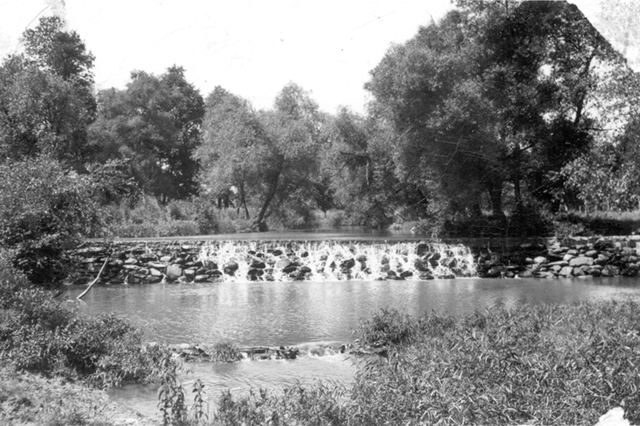Consider how laborers managed to collect, move, and place such large boulders with no more than human and animal muscle. The dam once stood a few feet higher—enough to raise the level of the impoundment more than 12 feet above the outflow from the wheel at the mill. In 1908 at the near end of the dam, miller William M. Fling signed his name in wet concrete he used to cap and reinforce the dam.A bit beyond the dam, in 1814, African American Benjamin Kins and wife Letitia bought two acres spanning the creek and built a house. They were among the first black families in the area to own their own land. Benjamin had been born a slave in Calvert County, Maryland, about 1770, but owner John Talbott freed him when the Quakers abol-ished the use of slaves in 1776. Talbott Farm remains today just southeast of the village.
15. The Mill Dam

